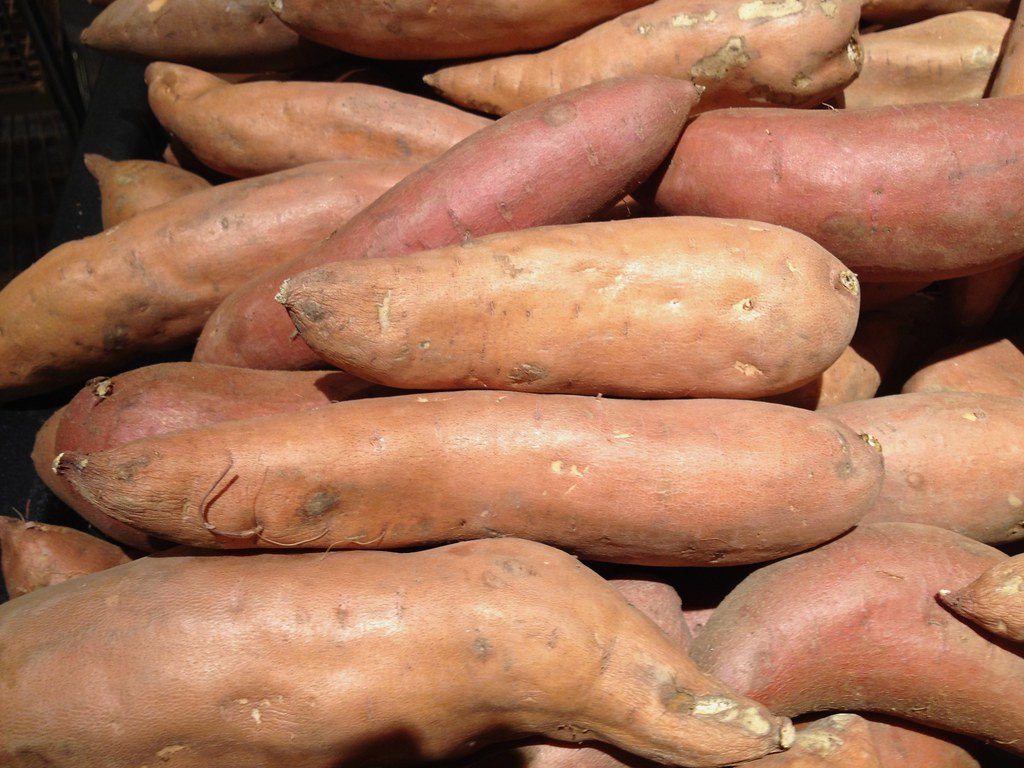Yams, sweet potatoes, and cassava are classed as tuberous root vegetables that come from a flowering plant but are not related and do not have much in common. In the U.S., they are marketed as different vegetables. Yams are native to Africa and Asia and can be the size of a regular potato to five feet long! They have a cylindrical shape with a bark-like skin with white, yellow, orange, purple or reddish-orange flesh. Yams have a starchy and drier flesh than sweet potatoes. Yams are perennial herbaceous vines and cultivated because of their edible tubers in many temperate and tropical regions, especially in Africa, South America, the Caribbean, Asia, and Oceania.
Interestingly, sweet potatoes come from the morning glory flower family, which often are grown along a garden fence. Vardaman, Mississippi, where an annual Sweet Potato Festival is held, takes credit for being the "Sweet Potato Capital of the World. There are many varieties of sweet potatoes, but in the U.S. there two major types that are consumed and can generally be found in the market place. The firm sweet potato has a golden skin and pale flesh, while the soft sweet potato has a copper color skin and orange flesh. One needs to check any recipe involving sweet potatoes before preparation because the firm sweet potato remains waxy and firm after cooking, while the soft variety becomes fluffy and creamy after baking. The consumer needs to select either firm or soft varieties such that their dish has the consistency desired. The take-away message of selection of the sweet potato you desire is to use your eyes to look at the skin. The "soft kind" is probably best for your Thanksgiving casserole.
Though there are many cultivars and related species of yams and sweet potatoes, the two tuber crops have been largely displaced by the introduction of cassava, a calorie rich vegetable that contains a good source of vitamin C, thiamine, riboflavin and niacin, in many parts of the world. The leaves are edible if cooked or dried and can contain up to 25% protein, but should not be eaten raw, only cooked, due to content of cyanide. However, cassava can be ground to make tapioca that people can use to make puddings or as thickening agent.
Cassava has a history of being consumed hundreds of years before Christopher Columbus first voyaged to the Amazon River in South America. Today, cassava is grown in the tropics, and it is estimated that over 800 million people consume it in their diet. Cassava provides more calories/gram than any other tuber, but it must be eaten cooked to eliminate natural toxins in the root. Cassava contains no gluten making it a good choice for those with gluten-intolerance. Technology has found cassava can also be used for making medications, paper, fabrics and building materials such a plywood. Research scientists are also studying how to replace high-fructose corn syrup with cassava starch, a much more nutritious choice.









